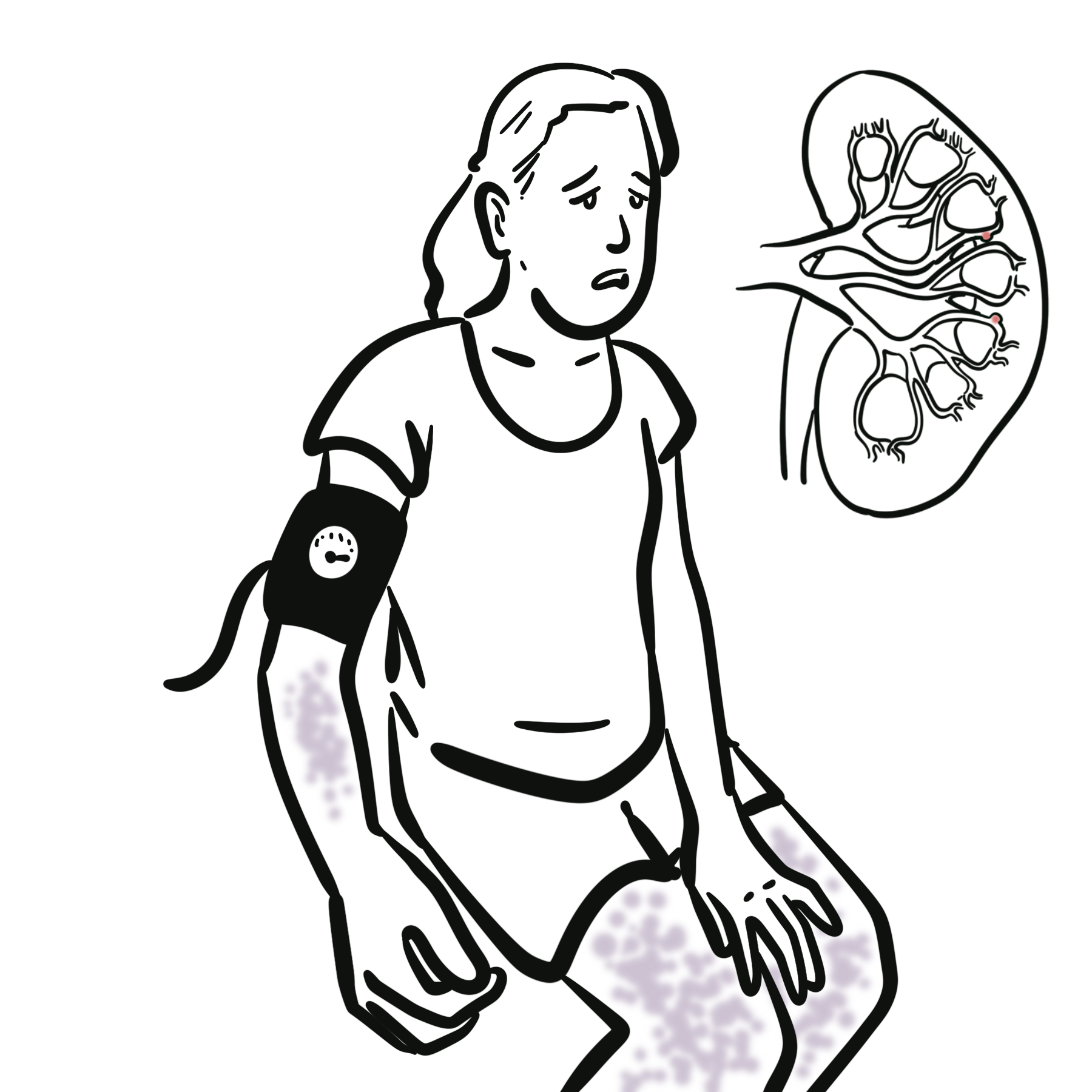Polyarteritis Nodosa


Polyarteritis Nodosa (PAN) is a necrotising vasculitis that affects medium-sized muscular arteries, leading to transmural inflammation, fibrinoid necrosis, and subsequent aneurysm formation or ischemia. It does not involve arterioles, capillaries, or venules, and is not associated with ANCA. PAN can affect any organ except the lungs. It typically presents in middle-aged adults, more commonly in men, and has been historically associated with hepatitis B infection.
Polyarteritis Nodosa (PAN): A systemic necrotising vasculitis involving medium-sized arteries, leading to organ ischemia and infarction.
Necrotising vasculitis: Inflammation of the vessel wall with fibrinoid necrosis and leukocytic infiltration.
Microaneurysm: Localized arterial dilatation due to vessel wall weakening from inflammation.
Mononeuritis multiplex: Asymmetric sensorimotor peripheral neuropathy affecting multiple nerves due to vasculitis.
PAN = medium-sized arteries, ANCA-negative, lungs spared.
Aetiology
Risk Factors
Mesenteric or renal aneurysms on angiography = classic PAN feature.
| System | Manifestations |
| Constitutional | • Fever, weight loss, malaise, fatigue |
| Skin | • Livedo reticularis • Palpable purpura • Nodules • Ulcers |
| Neurologic | • Mononeuritis multiplex • Peripheral neuropathy |
| Renal | • Renal infarcts • Hypertension (from renal ischemia) |
| GI | • Postprandial abdominal pain (intestinal angina) • GI bleeding • Bowel infarction or perforation |
| Cardiac | • Myocarditis, coronary vasculitis, arrhythmias |
| Musculoskeletal | • Myalgias • Arthralgias |
| Testicular | • Painful testicular tenderness (vasculitis) |
Triad Livedo reticularis, Mononeuritis multiplex, Renal/midline aneurysms on angiography.
| Classification Criteria (ACR 1990) (≥3 of 10) |
| Weight loss >4 kg |
| Livedo reticularis |
| Testicular pain or tenderness |
| Myalgias or muscle weakness |
| Mononeuritis multiplex |
| Diastolic BP >90 mmHg |
| Elevated BUN or creatinine |
| Hepatitis B virus infection |
| Arteriographic abnormality (aneurysms, stenosis) |
| Biopsy showing necrotising vasculitis of medium-sized artery |
Differential Diagnoses
| Severity | Treatment Strategy |
| Mild-moderate | • High-dose glucocorticoids alone |
| Severe (organ-threatening) | • Glucocorticoids + cyclophosphamide |
| HBV-associated | • Antivirals + short-course steroids + plasmapheresis |
| Refractory/relapse | • Consider rituximab, azathioprine, or methotrexate as maintenance |
Always screen for HBV, HCV, HIV, TB before starting immunosuppressants.
Poor Prognostic Factors (Five-Factor Score)

Please confirm you want to block this member.
You will no longer be able to:
Please allow a few minutes for this process to complete.
Discussion